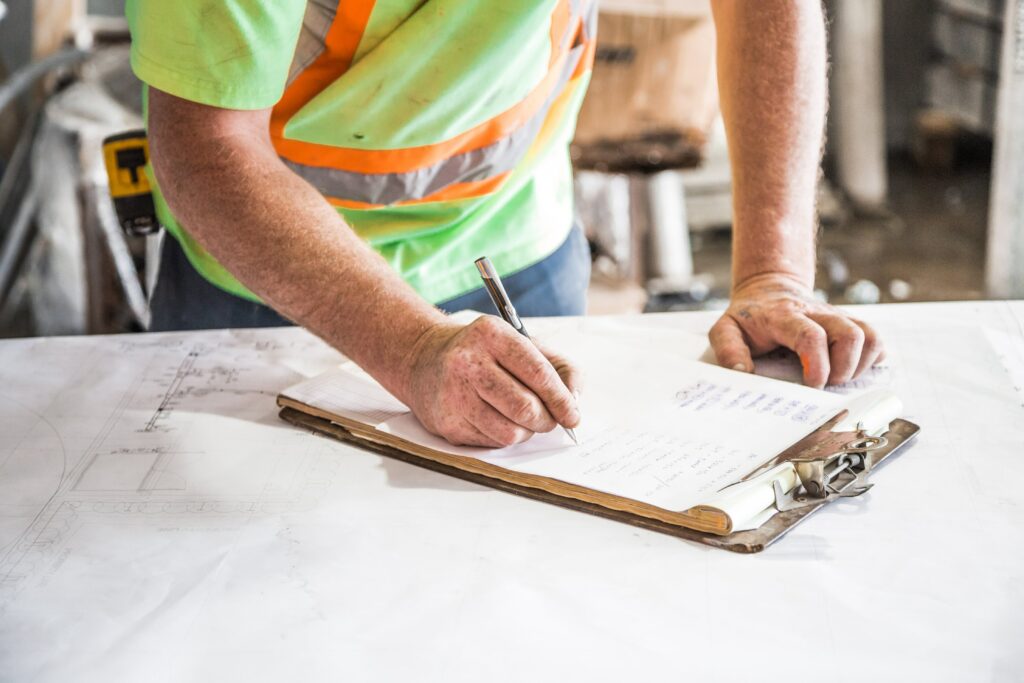Determining when OSHA general industry or construction standards are applicable in your facility can be one of the more complicated regulatory compliance questions to answer. Does painting part of your facility fall under construction or general industry? What about a repair or a demolition? Because these standards can be used to regulate the same hazards, deciding when to use the general industry vs. the construction standard can be confusing.
The construction industry standard in 29 CFR 1926 covers construction workplace hazards and addresses the responsibilities of construction industry employees. The general industry standard in 29 CFR 1910 refers to all industries not included in construction, agriculture or maritime. However, even with these differentiations, determining where your hazards fall can be tricky.
OSHA General Industry vs. Construction Standards
While the general industry and construction standards can have similarities, it’s important to note that these standards cannot be used interchangeably. Even when both general industry and construction standards can regulate the same hazard, they are likely to have significant differences:
- Cranes. While the construction standard addresses requirements for crane suspended platforms, material hoists and personnel hoists, the general industry regulations do not include these requirements.
- Electrical. The construction standard requires ground fault circuit interrupters (GFCIs) or an assured equipment conductor grounding program on all 120-volt outlets used by employees that are not part of permanent wiring. GFCIs and assured grounding programs are not addressed in the general industry standards.
- Material Handling – Rigging. The construction standard contains a table for requirements in spacing and numbering wire rope clips, while this is not included in the general industry regulations.
Some standards, such as Hazardous Waste Operations and Emergency Response (HAZWOPER) and the Hazard Communication Standard, are duplicated in the general industry and construction standards. Determining which of these duplications to use will need to be made on a case-by-case basis.
Determining Where Your Work Falls
Workplaces classified as a general industry facility might still have activities OSHA can classify as construction work. Under the 1910 general industry standard, OSHA describes construction work as “work for construction, alterations, and/or repair, including painting and decorating.” If you have facility projects such as additions to buildings, painting, making alterations or demolition work, they are considered construction work by OSHA and therefore citable under the 1926 construction standard.
If you are trying to determine if your work falls under general industry or construction, there are guidelines that may help:
- Non-construction companies can perform work that OSHA will classify as construction work.
- Construction work is not limited to new construction. It includes the repair of existing facilities.
- Maintenance is not usually considered construction. While OSHA does not provide a specified definition for maintenance, maintenance activities can be defined as making or keeping a structure, fixture or foundation in proper condition in a routine, scheduled or anticipated fashion. This definition implies keeping equipment working in its existing state. However, evaluating whether a maintenance activity will fall under construction regulations must be on a case-by-case basis.
- Using a company’s own employees or an outside contractor is not relevant. It is the classification of the work that matters, not who is performing it.
- Scale and complexity of the job can make a difference. The more involved an operation is, the more likely OSHA is to view it as construction and not maintenance.
Researching the standards will be necessary to make your determination. The specific differences between construction and general industry standards must be considered. OSHA also publishes compliance directives and letters of interpretations that may be helpful.
Get OSHA Support
For an employer, there are no clear-cut rules for determining when to apply OSHA general industry vs. construction standards. While OSHA provides guidelines, the burden of deciding which standard to apply falls on the employer and will often need to be made on a case-by-case basis.
There will be cases when, even after careful consideration, the classification of work will still be uncertain and a judgement call will need to be made. When in doubt, a good practice is to comply with the standard with the stricter requirements.
For help in determining your OSHA general industry vs. construction compliance burdens, contact Tetra Tech’s health and safety experts at [email protected]. Tetra Tech can help you reduce your workplace hazards and make determinations about your compliance.






